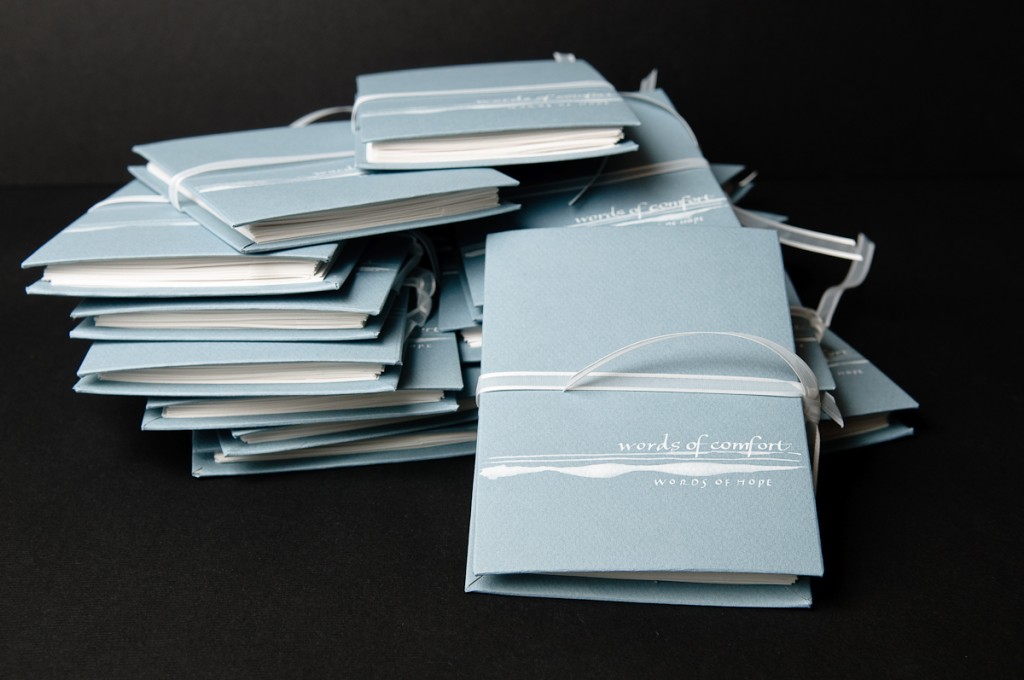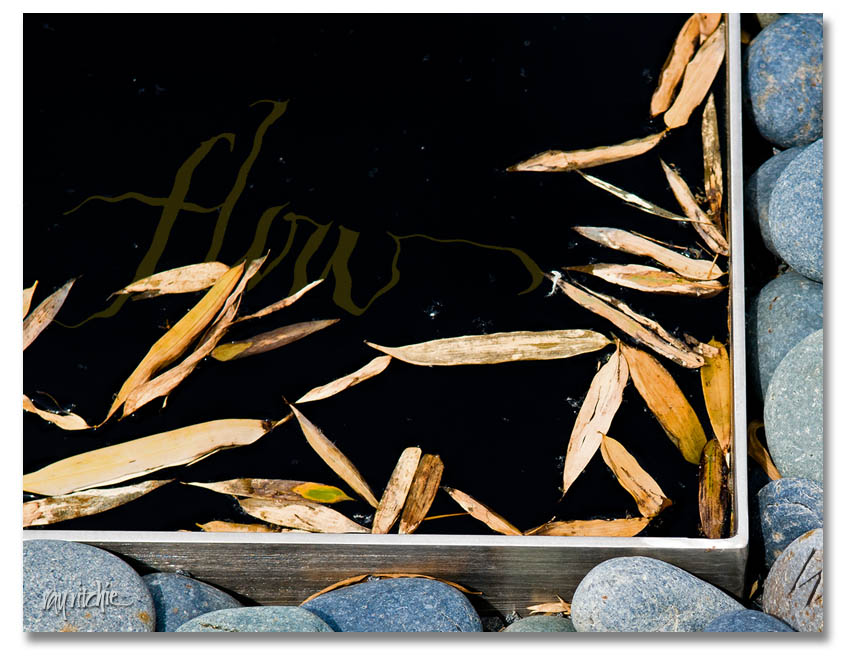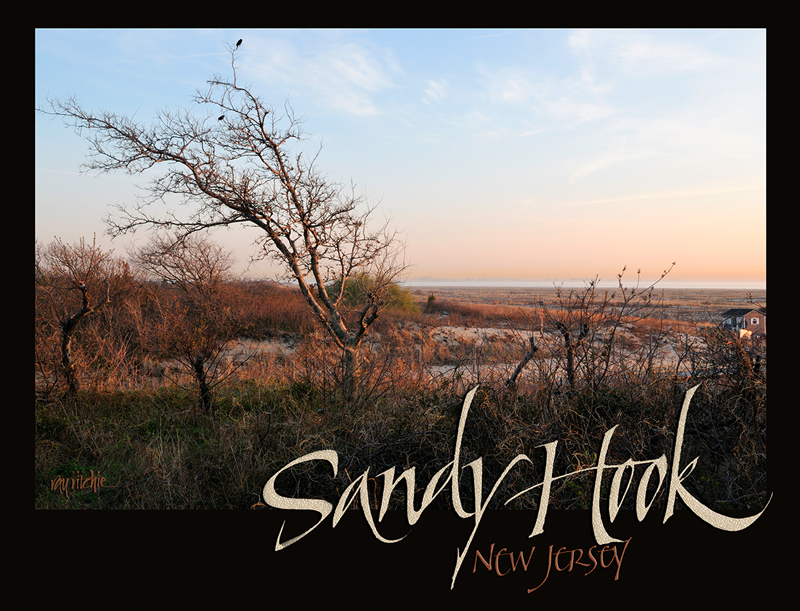My wife and I are leaders of an adult church school class called Seekers, and this year we asked the class to think about the question “What resources do you turn to in times of trouble?” The class responded by writing about hymns, scriptures, favorite quotations, and personal recollections, and we decided to make these writings into a book that our class members could have as a keepsake.
Never having done a book-making project, we thought we’d probably want to avoid a binding method that required stitching, so we settled on an accordian-fold binding. No calligraphy here except for the cover, as the entire book ran to more than 30 pages, and we needed to make about 15 copies. But I was still pleased with the way it came out – here’s the result:
I learned a couple of things here – first, I did enjoy the bookmaking process. And second, making 15 copies of a book is really time-consuming! For those who like details, the covers were made from chipboard, covered with Canson paper and the cover was then painted and lettered with white gouache. The closure ribbon was inserted between the chipboard and cover paper for the back cover, and threaded through slots cut into the edge of that cover. I’m sure there are other solutions to making a closure – this is just the one we arrived at without knowing what we were doing.
I think Comfort and Hope would be a good theme for a calligraphic piece. What gives you comfort and hope? If you don’t want to comment publicly, please feel free to send me a private e-mail using the Contact page. Let me know, too, if you’d give me permission to use some of your words.



